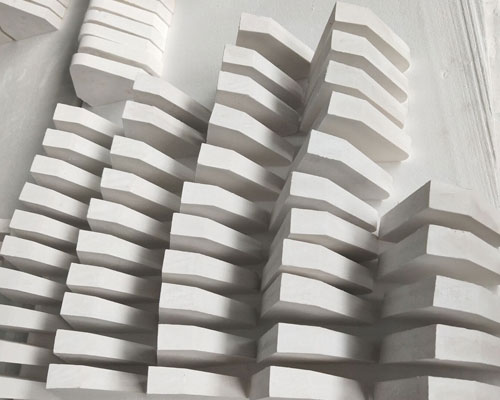Compared with the ceramic fiber surface of the feed nozzle, the tightly woven glass fiber fabric on the surface of alumina ceramic gasket is smoother and less aggressive or abrasive. The fabric on the cushion produces much less roll scratches than the material of the feed nozzle. The fiber direction of the feed head is random, and the protruding end is easy to wear the caster surface. Compared with the alumina ceramic fiber that is usually used to make the feeding head, the silica of the glass fiber is smoother and less abrasive. The fibers also tend to be closer to the roll tangent, thereby minimizing the end of the abrasive fiber against the roll surface.
The ceramic fiber material layer includes a paper-like material that includes a high-temperature resistant mineral component that expands when heated.
When fixed along the edge of the feed nozzle, alumina ceramic gasket made of this material is approximately flat (albeit stepped). When heated by the molten aluminum when the feed head is used for the first time, the gasket material expands and the outer surface of each cushion is engaged with the surface of the adjacent roll. The surface of the pad conforms to the curvature of the roll and forms a tight “seal” with the roll. The downstream portion of the cushion consisting of two layers of glass fiber cloth allows the cushion to taper according to the shape of the caster and the downstream edge of the feed nozzle assembly.

The alumina ceramic gasket not only provides a smoother and less corrosive surface on the roller, thereby minimizing scratches, but also helps maintain an inert atmosphere near the molten metal by reducing the presence of oxygen, which shortens the gasket life expectancy. The gasket material also reduces the overall deflection of the feed nozzle, thereby further reducing the possibility of the feed nozzle scraping the pair of casters.

